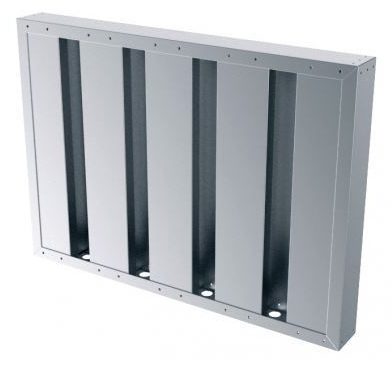
Volume Control Dampers
Sand trap louvers are specialized components used in heating, ventilation, and air conditioning (HVAC) systems to prevent the entry of sand, dust, and other airborne particles into the building. These louvers are designed to allow the passage of air while blocking and capturing larger particles. Here are key features and functions of sand trap louvers:
- Purpose:
- Particle Protection: The primary function of sand trap louvers is to protect HVAC systems and building interiors from the ingress of sand, dust, debris, and other airborne particles.
- Airflow: Despite blocking larger particles, sand trap louvers allow the passage of air, maintaining adequate ventilation and preventing a significant pressure drop.
- Design and Construction:
- Blades: Sand trap louvers typically have vertical or angled blades that are designed to trap and prevent the entry of sand and particles.
- Frame: The louvers are housed in a sturdy frame, usually made of materials like aluminum or galvanized steel for durability and corrosion resistance.
- Mesh or Filters: Some sand trap louvers may include additional filters or mesh screens to further capture fine particles.
- Location:
- Intake Points: Sand trap louvers are commonly installed at the intake points of HVAC systems, such as air inlets or openings in building facades, where the risk of sand and dust infiltration is higher.
- Applications:
- Desert Environments: Sand trap louvers are particularly useful in areas with a high prevalence of sandstorms or desert environments where airborne sand and dust are significant concerns.
- Industrial Settings: They may also be employed in industrial settings where there is a risk of airborne particulates that could potentially damage HVAC equipment or affect indoor air quality.
- Maintenance:
- Cleaning: Regular maintenance is essential to ensure the continued effectiveness of sand trap louvers. Cleaning and inspecting the louvers help prevent the accumulation of debris that could impede airflow.
- Compliance:
- Standards: Sand trap louvers should comply with relevant industry standards and building codes to ensure their effectiveness and safe operation.
- Integration with HVAC Systems:
- Compatibility: Sand trap louvers are integrated into the overall HVAC system design and should be selected based on compatibility with the system’s airflow requirements.
In summary, sand trap louvers serve as a protective barrier against the infiltration of sand and dust into HVAC systems and buildings. Their design and installation are critical to maintaining efficient airflow while effectively preventing the entry of particulate matter. Regular maintenance and adherence to industry standards contribute to the optimal performance of sand trap louvers in various environmental conditions.